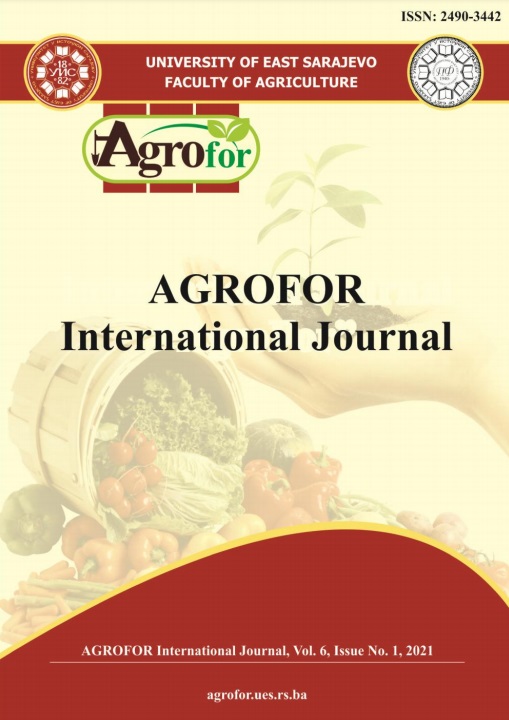ASSESSMENT OF GENETIC VARIATION AMONG PISTACIA ATLANTICA DESF. REGARDING SEXUAL GENOTYPES (MALE, FEMALE AND HERMAPHRODITIC) USING ISSRS. MARKERS
DOI:
https://doi.org/10.7251/AGRENG2101036AAbstract
All Pistacia species are dioecious, male and female flowers are born on separated
trees. Our recent studies identified new hermaphroditic genotypes of P. atlantica
with different structure of racemes and flowers at the south of Syria. Therefore, the
current research aimed to assess genetic variation among 11 genotypes (3 female, 5
hermaphroditic, 3 male) across fifteen ISSRs primers in Sweida Research Center
(2018-2019). All of the primers were able to detect the polymorphism, which
revealed 214 bands, 205 of them were polymorphic (95.79%). The number of
bands for each primer ranged from 6 to 33, with an average 14.27 bands for each
Primer. Genetic similarity among all studied genotypes ranged from (0.27) between
hermaphroditic genotype (PA52) with female genotype (FA3) as well as between
MA3 male genotype and FA2 female genotype, while the highest genetic similarity
was 0.77 between two hermaphroditic genotypes (PA37and PA52). Cluster
analysis grouped all studied genotypes into three main clusters according to their
sexual structure; the first cluster contained all of the hermaphroditic genotypes and
the second cluster comprised of all male genotypes, while the third cluster included
all female genotypes. The results demonstrated the importance and the efficiency
of ISSR technique by revealing the genetic variation among P. atlantica genotypes
and separating all of them into detached clusters according to their sexual structure.
Farther more, some primers were able to detect common bands in each sexual
structure which might help to understand the mechanism of sexual inheritance
within the studied species.

